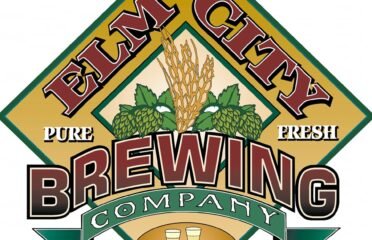Bitter Beer: Exploring the Bold and Flavorful World of Bitter Ales
In the vast universe of beer, few styles command attention quite like bitter ales. Bold, assertive, and bursting with flavor, these brews offer a palate-puckering experience that leaves a lasting impression. Join us as we delve into the fascinating world of bitter beer, uncovering its origins, understanding its characteristics, and exploring its enduring appeal.
Chapter 1: The Roots of Bitterness Bitter ales trace their lineage back to England, where they were born out of necessity and innovation. Historically, hops were added to beer as a natural preservative, helping to extend its shelf life during long journeys at sea. Over time, brewers began to experiment with adding more hops to their brews, resulting in beers with a pronounced bitterness and a distinctively hoppy flavor profile. Thus, the bitter ale was born – a beer style that would come to define the taste of English brewing for centuries to come.
Chapter 2: Understanding Bitterness At the heart of bitter beer lies, well, bitterness. But what exactly gives these brews their distinctive taste? The answer lies in the hops – specifically, the alpha acids found in hops, which impart bitterness to beer when boiled during the brewing process. Different hop varieties contribute different levels of bitterness, with some offering a subtle, lingering bitterness and others packing a more intense punch. In addition to bitterness, hops also contribute floral, herbal, and citrusy aromas and flavors to bitter ales, adding depth and complexity to the brew.
Chapter 3: Bitter Ales: A Diverse Family While bitter ales share a common thread of bitterness, they come in many shapes and sizes, each with its own unique characteristics. One of the most iconic styles of bitter ale is the English Bitter, which is known for its balanced malt sweetness, moderate bitterness, and dry finish. Meanwhile, American-style bitter ales, such as American Pale Ales and India Pale Ales (IPAs), tend to be more hop-forward, with bold citrus and piney hop flavors and a higher level of bitterness. And let’s not forget about Belgian-style bitter ales, which often feature fruity yeast esters and spicy phenols alongside their hop bitterness.
Chapter 4: Brewing Bitter Ales Brewing bitter ales requires a delicate balance of ingredients and techniques to achieve the perfect blend of bitterness, malt sweetness, and hop aroma and flavor. It starts with selecting the right combination of malted barley, which provides the beer’s backbone and sweetness, and hops, which provide bitterness and aroma. The brewing process typically involves mashing the malted barley to extract fermentable sugars, boiling the wort with hops to impart bitterness and flavor, fermenting the beer with yeast to produce alcohol and carbonation, and conditioning the beer to develop its final flavor and aroma profile.
Chapter 5: Pairing Bitter Ales with Food One of the joys of bitter beer lies in its versatility when it comes to food pairing. The bold flavors and assertive bitterness of bitter ales make them a perfect match for a wide range of dishes, from spicy Indian curries and tangy barbecue ribs to rich, creamy cheeses and decadent chocolate desserts. The bitterness of the beer acts as a palate cleanser, cutting through rich or spicy flavors and refreshing the taste buds with each sip. So whether you’re enjoying a pint with a hearty meal or sipping on its own, bitter beer is sure to elevate the dining experience.
Chapter 6: The Bitter Beer Revolution In recent years, bitter beer has experienced a renaissance, with craft breweries around the world putting their own spin on this classic style. From juicy, hazy New England IPAs to bold, resinous Double IPAs, brewers are pushing the boundaries of bitterness and flavor, experimenting with new hop varieties, brewing techniques, and flavor combinations. Meanwhile, traditional styles like English Bitters and Belgian-style ales continue to delight beer enthusiasts with their timeless appeal. It’s an exciting time to be a fan of bitter beer, with new and innovative brews hitting the market every day.
Chapter 7: Bitter Beer Culture and Community Bitter beer has a way of bringing people together – whether it’s bonding over a shared love of hoppy brews or debating the merits of different hop varieties. Craft beer enthusiasts often seek out breweries and beer bars that specialize in bitter ales, eager to explore the wide range of flavors and styles that this diverse beer category has to offer. And with beer festivals and tasting events dedicated to celebrating bitter beer, there’s no shortage of opportunities to connect with fellow beer lovers and share in the enjoyment of this beloved beer style.
Conclusion: Embracing the Bitterness In conclusion, bitter beer offers a bold and flavorful experience that’s as complex as it is satisfying. From its humble beginnings in England to its global popularity today, bitter ales continue to captivate beer enthusiasts with their distinctive taste and rich brewing heritage. So whether you’re a hop head searching for the next big IPA or a curious newcomer eager to explore the world of bitter beer, there’s never been a better time to embrace the bitterness and dive into this fascinating beer style. Cheers to bitter beer – may your glasses always be full and your palates forever adventurous!
For past beer reviews….
And check out some of the great businesses changing the world in our Business Showcase. (Don’t see yours? Go to the Submit button up top and add your nonprofit!)
Reach out to us for a full Advertising program for your business.

Become a Sponsor
Ad The Summit Winery
- 5.0/ 5 1 Rating
-
Winery
I am not a super wine drinker, but when I do drink wine, this is where I go. Darren and Judy pr...
Modestman Brewing, Keene, New Hampshire
- 5.0/ 5 1 Rating
-
Brewery
This has been one of my favorite breweries here in the Keene area. Loved their sours and their ...
Abate Apizza & Seafood Restaurant
Wooster Street’s Best Kept Secret🍕 Now Located in North Haven, CT
















